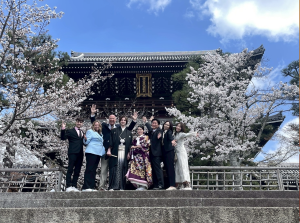This Week In Ag #110
Konnichiwa! This Week in Ag comes to you this week from Japan. I’m here for my son’s wedding. My new daughter chose this time of year to align with the famous blooming of the cherry blossoms. These Sakura trees provide amazing backdrops for wedding photos. You may have heard about Japan’s cherry blossoms and perhaps seen pictures online or on travel shows. But let me be clear: these do not do the flowers justice. The sights are awe-inspiring. Gardens, parks, temples, river banks and streets lined with Sakura trees provide spectacularly scenic backdrops. Pedals blow in the wind like gentle snowfall. A unique feature of some Sakura trees is their ability to bloom before leaves emerge, which further emphasizes the flowers. The tradition of viewing cherry blossoms, known as Hanami, may also be one of the world’s oldest if not original, forms of agrotourism. It’s a tradition that many believe dates back over 1,000 years. Today, more than 4 million visitors annually ascend to Japan to take in the sights, smells and tastes of the Sakura. There are ten wild Sakura tree species native to Japan. But as with any commercially viable crop, this has led to the man-driven practice of creating cultivars via plant breeding. The oldest cherry blossom cultivar, known as Pedula, or “weeping cherry”, extends back to the 10th century and is still enjoyed today by locals and tourists alike. Now, over 100 cultivars of Sakura exist. Much like pumpkin in the fall or prickly pear in the desert, Sakura has become a popular, if not trendy, food ingredient. There are Sakura-inspired ramen noodles, Dango rice balls, assorted candies and teas. And of course, there’s even a Sakura flavor at certain coffee shops.


Related Posts

Latest Edition of the BHN Newsletter, The Solution, Is Available
We love to hear stories from the people who use our products, and a number of those stories are included in this issue of The Solution. We begin with a report from Holden Research and Consulting on how use of certain Huma Gro® products on strawberries led to an ROI of over $3,400/acre. Amazing! Equally

This Week in Ag #1
Curly fries, waffle fries, spicy fries or… regen fries? Soon, these may all be choices in the frozen foods aisle, at least if McCain Foods has a say in it. And as the world leader in prepared potato products, purchasing 6.8 million tons of spuds annually, McCain carries a strong voice. Their commitment to sustainability includes a pledge to have regen

BHN Assists St Vincent de Paul Mesa Urban Farm
[et_pb_section bb_built=”1″][et_pb_row][et_pb_column type=”4_4″][et_pb_text _builder_version=”3.8″] The Society of St. Vincent de Paul (SVDP)—with its mission of Feed, Clothe, House, Heal—does a lot of work for the poor and homeless in the Greater Phoenix area, and their many projects include several urban farms that are in proximity to their free dining rooms. As with most of their

